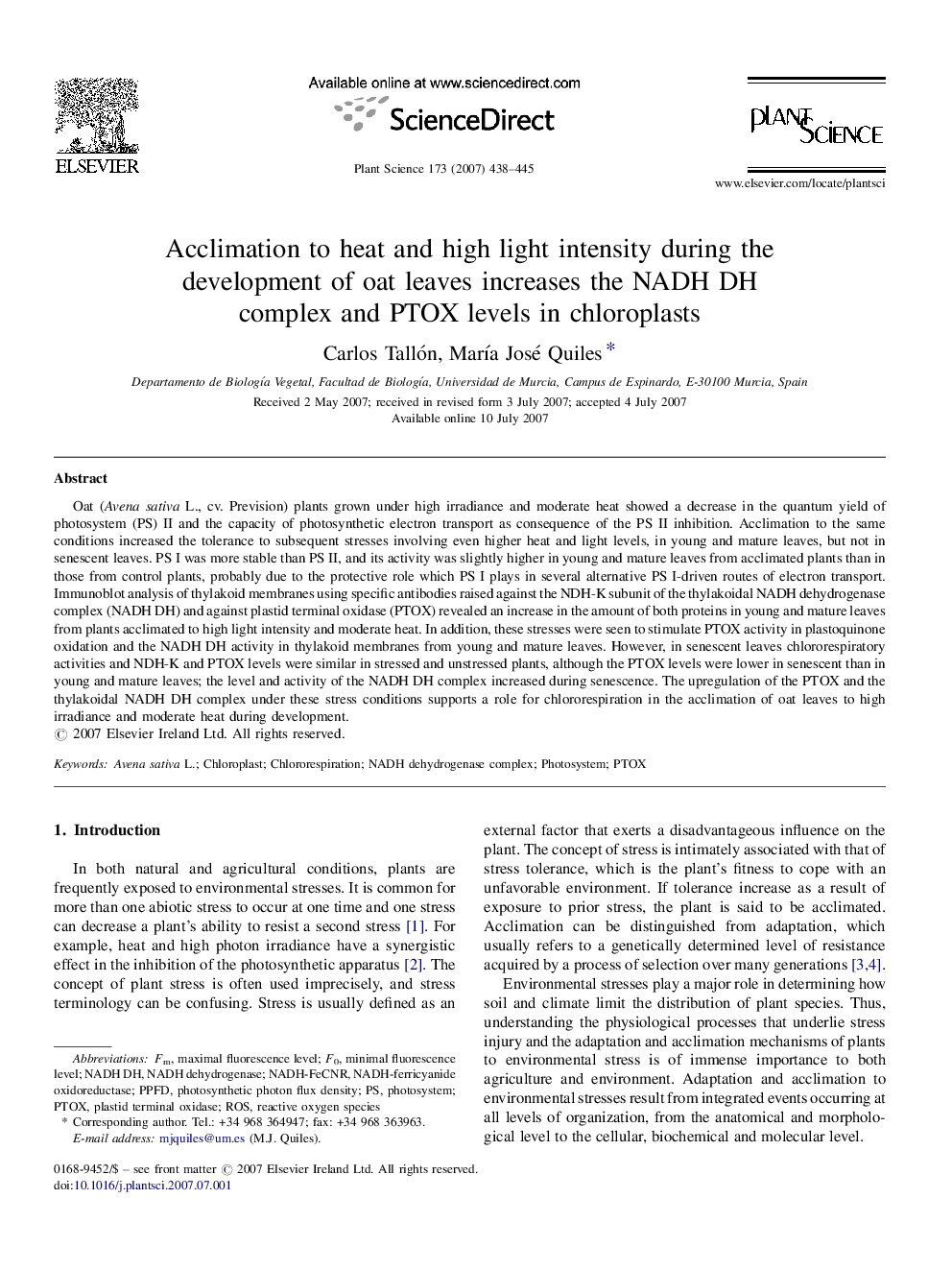| Article ID | Journal | Published Year | Pages | File Type |
|---|---|---|---|---|
| 2018680 | Plant Science | 2007 | 8 Pages |
Oat (Avena sativa L., cv. Prevision) plants grown under high irradiance and moderate heat showed a decrease in the quantum yield of photosystem (PS) II and the capacity of photosynthetic electron transport as consequence of the PS II inhibition. Acclimation to the same conditions increased the tolerance to subsequent stresses involving even higher heat and light levels, in young and mature leaves, but not in senescent leaves. PS I was more stable than PS II, and its activity was slightly higher in young and mature leaves from acclimated plants than in those from control plants, probably due to the protective role which PS I plays in several alternative PS I-driven routes of electron transport. Immunoblot analysis of thylakoid membranes using specific antibodies raised against the NDH-K subunit of the thylakoidal NADH dehydrogenase complex (NADH DH) and against plastid terminal oxidase (PTOX) revealed an increase in the amount of both proteins in young and mature leaves from plants acclimated to high light intensity and moderate heat. In addition, these stresses were seen to stimulate PTOX activity in plastoquinone oxidation and the NADH DH activity in thylakoid membranes from young and mature leaves. However, in senescent leaves chlororespiratory activities and NDH-K and PTOX levels were similar in stressed and unstressed plants, although the PTOX levels were lower in senescent than in young and mature leaves; the level and activity of the NADH DH complex increased during senescence. The upregulation of the PTOX and the thylakoidal NADH DH complex under these stress conditions supports a role for chlororespiration in the acclimation of oat leaves to high irradiance and moderate heat during development.
